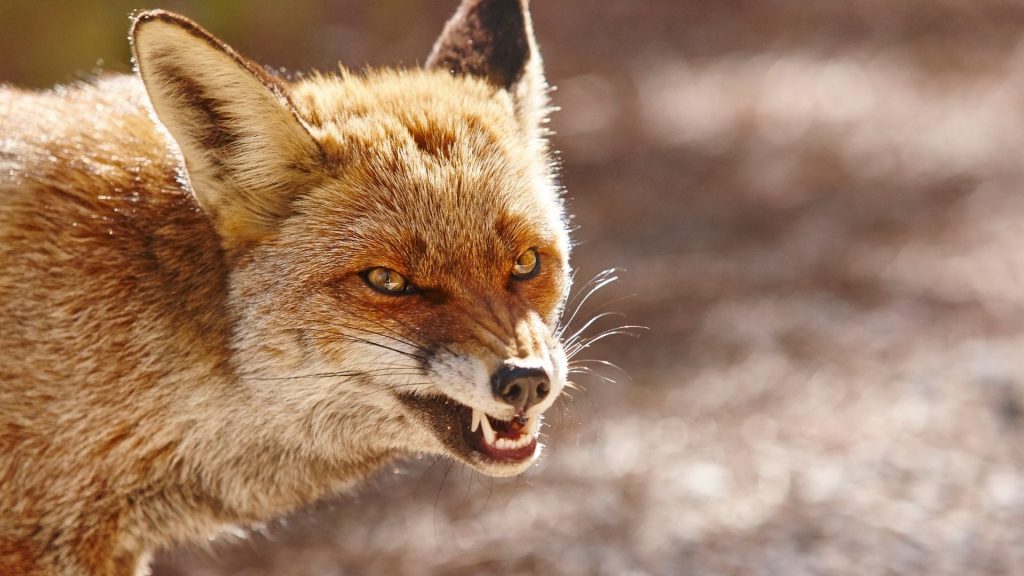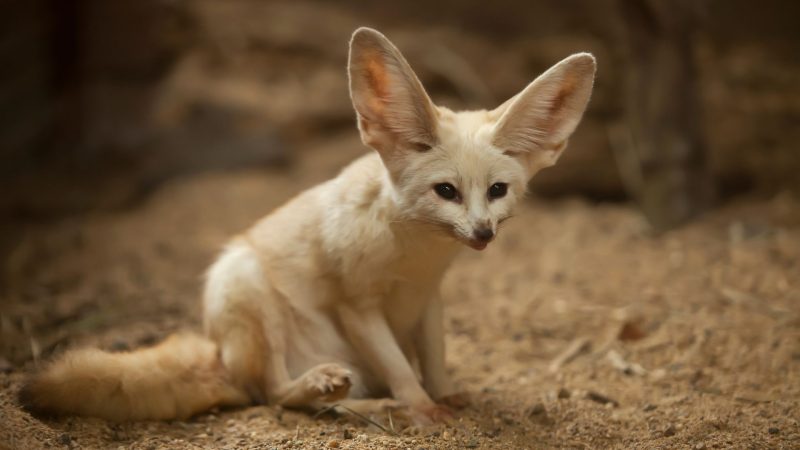Foxes are often considered symbols of beauty and magnificence. This may be due to their exquisite and elegant appearances, mesmerizing radiance, and majestic builts. They are frequently spotted in a diverse range of habitats such as forests, grasslands, deserts, and mountains, although they tend to shy away from people.
What exactly do foxes look like? Foxes are often mistaken as dogs, coyotes, jackals, or wolves due to their somewhat similar appearances. They are small to medium in size with body structures that are covered with fur. Their skulls are flattened, and their snouts are pointed, narrow, and usually directed in an upward position. Lastly, their ears have an upright, triangular shape and their tails are long and bushy.
We will cover more about a fox’s traits and behavior, other creatures that look like them, and the effects of their presence on the health and safety of humans and other animals.
Table of Contents
What Are Foxes?

A fox is an animal belonging to the family Canidae, suborder Caniformia, order Carnivora, and class Mammalia. They are typically active during dusk or nighttime in order to search for food. The foxes are omnivores in nature, and their diet consists of insects, small animals like birds and reptiles, eggs, and vegetation, although some species have a specific food preference. They acquire their food by hunting and performing a distinct pouncing act while their excess provisions are stored by burying them under the soil, snow, or leaves.
Foxes can be seen in almost all of the parts of every continent. They are further classified into numerous subspecies, but the most common types are the red foxes (Vulpes vulpes).
Fox Identification
The following are the identifying traits of some of the most common species of foxes:
What Does a Gray Fox Look Like?
A gray fox is typically 31 to 44 inches in length and weighs at least 7 to 13 pounds. Their overall body color is gray, with the darkest shade on the top part, and extends until their tails. However, their throat, chest, and belly are white in color, while the fur in their ruff, ears, and neck have an orange to red tinge.
Compared to red foxes, they have shorter body structures, specifically as to their legs, snout, and ears. They also have oval pupils and hook-like claws, which they utilize when climbing trees to look for food or escape from predators.
What Does a Red Fox Look Like?
Red foxes have a length of 35 to 40 inches when measured from the tip of the nose to the tip of the tail. They weigh 7 to 15 pounds, although they may look heavier. Red is the predominant color of these fox species, although some are light yellow, deep red, or frosted black in the shade. Furthermore, their leg stockings and ears appear reddish to black, and their tails have a white tip, a characteristic that separates them from the other fox species.
Also, they have vertical pupils and yellow eyes, which become very useful when they hunt for food at nighttime. Other than that, they have a long snout, pointed ears, extensive jaws, a white underside, and a sharp set of teeth which they utilize when crushing and chewing their prey.
What Does an Arctic Fox Look Like?
Arctic foxes are approximately 43 inches in length, with tails reaching as long as 15 inches. They weigh 6 to 10 pounds, and their bodies are covered with white winter fur that gives them insulation from the extreme cold weather. However, they molt at least two times a year. They start to exhibit their white winter fur from September to October, which is then completed in November. By the month of June, the fur on their legs, face, and upper body parts start to show a brown color that typically signifies summer. Other than that, they have short body structures, specifically their legs and ears.
What Does a Fennec Fox Look Like?
Fennec foxes have a weight of 2 to 3 pounds. Their body length is 14 to 16 inches and with tails of at least 7 to 12 inches. They have a reddish cream to light fawn or white coating that is soft, thick, and long. The fennec foxes are considered the palest among all foxes due to their light color and white undersides, although their bushy tails have black tips. They thrive in desert areas, so their body size, furry paws, and large ears are designed for the dissipation of heat and survival from extremely hot temperatures.
Why Do Foxes Have Whiskers on Their Legs?

These mammals use these body structures to enable them to navigate through their surroundings. It functions as their ‘GPS,’ so that they would know and recognize the path they are treading. This helps them to move around tall grasses and bushes, especially when the range of vision in their immediate environment is lessened.
What Does a Fox Nose Look Like?
The noses of foxes may resemble that of domestic dogs. It is also black in color, and slightly pointed, although other fox species have pink pigmentation on their noses.
Is a Fox a Dog or a Cat?

Foxes are more of a dog, although they exhibit some similar traits and characteristics to cats. These creatures belong to the family Canidae, a group shared by dogs and wolves. This is the reason why foxes and dogs almost have the same anatomical structures, food preferences such as meat and vegetation, presence of snouts, prolific sense of smell, and large, triangular ears that are very adept in hearing.
As to their similarities with cats, they have excellent climbing abilities, vertical pupils and whiskers, and comparable traits in hunting, footing, and posture.
What Animals Look Like a Fox?
There are actually a handful of animals that resemble a fox. These are the following:
- Coyotes, although they have smaller body structures than foxes.
- Wolves resemble a red fox but with legs that are thinner and more extensive and a slender face in appearance.
- Dogs, specifically American Eskimo, Samoyed, Finnish Spitz, German Spitz, Alaskan Klee Kai, Shiba Inu, Akita, Chihuahua, Schipperke, and Norweigan Elkhound.
- Jackals, although they are larger in size and have slender face structures and thin body frames.
Can Fox Be a Pet?
It is uncommon for foxes to be made as pets. In most cases, they are regarded as wild animals rather than domesticated creatures due to their inevitable traits of hunting and preying for food. If people adopt them as pets, there is a slight risk for danger as these animals may harm and injure the members of the household if placed in a triggering situation.
In the US, only fifteen states are permitted by the government to own pet foxes. However, even though these states allow them to be made as house companions, only specific species of foxes may be transformed into pets. This is because of the innate threat and issue they give to a person’s safety and protection when threatened, even if some have learned to live in urban areas with the presence of humans.
Why Are Foxes a Problem?

Foxes may be considered as a problem due to the following reasons:
1. They are known to kill more prey than they can eat and devour.
Foxes have a trait of scavenging for excessive food. Once they finish eating, they have the tendency to bring the surplus food into their habitats and bury it under the soil, leaves, or snow. This aggressive hunting habit will threaten and endanger the biodiversity of animals.
2. They may cause the extinction of certain species of birds, mammals, and other rare animals.
Due to the exorbitant hunting routines of foxes, certain animal species may go extinct. These include brush-tailed bettongs, eastern grey kangaroos, long-nosed potoroos, bandicoots, numbats, rock-wallabies, and bird species like the ground-nesting birds. Aside from that, they are also the culprit of the annihilation of other animal creatures, such as common ringtails and brush-tail possums.
3. They pose an extreme risk to lambs, goats, and poultry animals.
Their lavish need to hunt and search for food may also endanger the population of farm animals, like lambs, goats, and other poultry animals.
4. They may transmit diseases and illnesses to humans and animals.
Foxes do not only kill a lot of prey but can also bring diseases to humans and other animals. These illnesses include rabies, tularemia, parvovirus, mange, and distemper.
Are Foxes Aggressive?
As a general rule, foxes are not aggressive creatures. When they see people, they tend to shy away and flee rather than fight and squabble. They can only be dangerous if placed in a threatened or perilous situation or when they are afflicted with rabies. Also, they only prey on small insects, birds, livestock, and mammals, so their capacity to directly attack humans for no reason may not be extensive. This means that when they are seen passing through yards, they might just be cutting through their hunting areas. They may even just search for fruits and vegetables to devour on gardens. There may be no need for further action or movement, as long as they are not causing harm and injury to people and pets.
What Happens if a Fox Bites You?
When a fox bites you, there is a possibility of acquiring rabies. The said creatures are known to be carriers of the said virus, and they may transmit it to humans, pets, and other mammals through biting and exposure to infected saliva. Also, bites that were not thoroughly cleaned and disinfected may lead to infection. Thus, it is highly recommended to wash the bitten area with soap and water immediately. You may also use an antiseptic solution to decrease the risk of getting infectious diseases. Also, you may opt to cover the bite site with a clean bandage and change the dressing regularly.
Do Foxes Eat Cats?

Although it may be uncommon, foxes may eat kittens. They may feed on small cats that are less than five pounds when they are extremely starving or put in a dangerous place. Adult cats have the capacity to fight with foxes and defend themselves from animal attacks, so the juvenile and impoverished ones have the highest risk.
In order to protect your pet cats, it is advisable to keep them inside your house. You can also put them in a secure place if the presence of foxes is regularly spotted around your area.
Does Fox Eat Humans?
Foxes are unlikely to eat humans as their source of food are primarily small animals, birds, and little insects. Also, they do not pose an extreme risk to the health and safety of people. They only become aggressive when threatened, experiencing deep hunger, or afflicted with the rabies virus. In the absence of these circumstances, they will probably not eat humans. However, a recent study suggested that foxes have been eating human food leftovers since the Upper Paleolithic period. This means that their dependence on the food leftover of people dates back to some 42,000 years ago.
Can Humans Catch Diseases From Foxes?

Humans can catch diseases from foxes such as the following:
- Rabies. It is a viral disease that can be acquired from the bites and scratches of infected animals like foxes, dogs, skunks, bats, and raccoons. This disease affects the central nervous system and can potentially cause severe complications and death when not managed as soon as possible.
- Toxoplasmosis. This is a disease caused by a parasite that is usually seen in foxes and certain animals, such as birds. It is transmitted when a person comes into contact with fox droppings infected with the Toxoplasma parasite. This is also the same with drinking and ingesting parasite-contaminated food and water. It starts with mild flu-like symptoms and may cause complications on the kidneys, nervous system, blood and eyes if not treated properly.
- Sarcoptic Mange. It is a skin condition caused by the parasitic mite known as Sarcoptes scabiei. This is a contagious disease that can be passed on to humans and other animals. When passed on by foxes, these mites tend to burrow on the skin, resulting in intense itching and allergic reactions.
Summary
Foxes are creatures belonging to the family Canidae that have pointed snouts, fur-filled bodies, triangular ears, and bushy tails. They are often mistaken as dogs, jackals, coyotes, or wolves due to their somewhat similar appearances. They are not considered aggressive creatures but may cause harm when threatened or experiencing intense hunger. The foxes may also bring diseases to humans and other animals like Toxoplasmosis, Sarcoptic Mange, and rabies.
List of Sources
Learn About Foxes. Commonwealth of Massachusetts.
Red Fox. (2018). Connecticut’s Official State Website.
Foxes. (2021). NSW Government.
Stephenson, B. (2018). Arctic Fox. State of Alaska · Department of Fish and Game.
Fennec Fox: Fact Sheet. Smithsonian’s National Zoo & Conservation Biology Institute.
